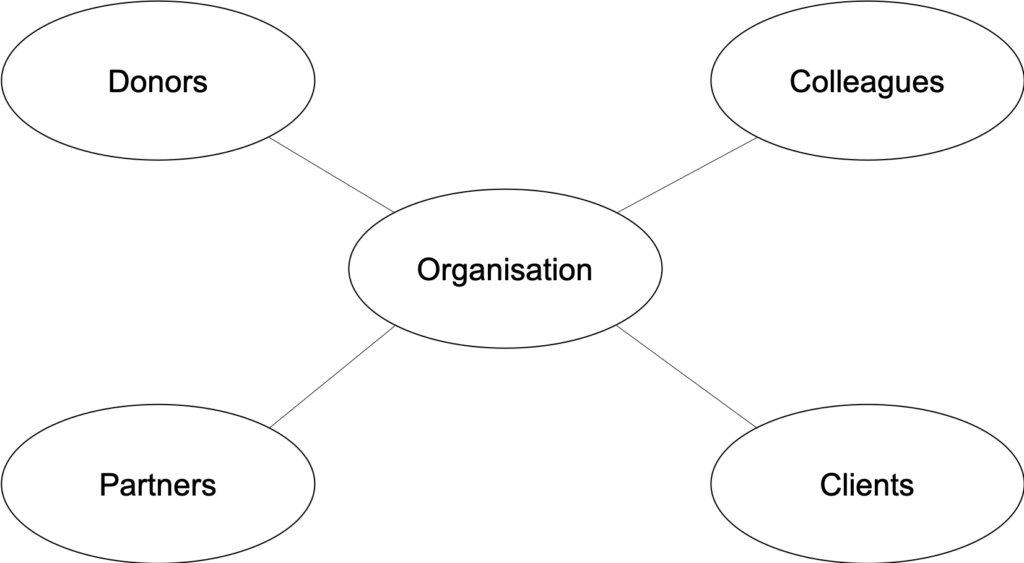Summary
This analysis sheds light upon the different people, groups or institutions that are somehow affected by or affect your work (they are henceforth called ‘stakeholders’). It systematically analyses respective demands and interests. On the way to creating a more inclusive organisation, this tool can help you or your organisation to identify all the groups that are affected by actions and projects, and understand how they can or cannot influence these actions and projects.
Goal/Learning Objective/Expected Output
Clearly identifying relevant people, groups and institutions for the organisation; developing a strategic focus on particular stakeholders.
Way/level of dealing with subject at stake
Collective analysis, strategic conceptualisation, reflection.
Application in moderation cycle
Analysing the organisation’s relationships, opening up, divergence, clarifying.
Duration
2–4 hours
Group Size
3–6 people (larger groups should be split for better outcomes)
Level of difficulty
Easy
Facilitator
Does not even require a clearly set facilitator role: the task can be self-directed by the group itself.
Materials needed
- Pen and paper
- Optionally a flipchart
Process description
Beginning
Stakeholders are groups, institutions and individuals who are to some extent affected by the organisation’s activities or who affect those activities. The stakeholder analysis is a systematic approach to map the stakeholders’ interests and the assumed impact the organisation or a project has on each of them. This analysis can be a good start in understanding power dynamics and possible relations that cement exclusion,. Hence it is helpful to formulate a particular intention with which to start the stakeholder analysis, such as ‘We want to find out how to increase inclusion in our projects.’ Later on, the stakeholders can be looked at individually when trying to change relationships to increase inclusion.
Step 1: Collecting
All stakeholders you can think of are written down and put onto a mindmap. During that process, they are clustered under agreed sub-groups. One example could be: donors, partners, colleagues, clients.
Step 2: Analysis

Identify the interests of all stakeholders in relation to your organisation and the influence they have on you. Rank each interest and influence from 1–5 according to their intensity. Then take the top ten and analyse them in more depth.
Doing this exercise in a group will show different opinions and sharpen understanding of the stakeholders through bringing different experiences and knowledge together.
Variation: Look at the power balance between stakeholders and your organisation – which player is more powerful and is that the way you want it to be? Also, look at the diversity of your stakeholders. Do they represent the diversity of your society when grouped together? Who are the powerful stakeholders?
Step 3: Strategy
Stakeholders that you identify as having strong interests and influence on you are the ones you can consider to invite into your processes. Others, less impactful ones, you might want to inform or consult. Developing a four-field-matrix with two axes can be helpful here:
- not interested or even sceptical <-> very interested
- not so influential <-> highly influential.
Develop strategies for how you want to relate with the key stakeholders you have identified. Is a change necessary? How would you like to shape the relationship in the future and what needs to be in place to do so?
Considerations
If you work with volunteers for example, they will have strong interests but not as much influence on the organisation. This might create a power imbalance that you could consider changing.
Debriefing options
Engaging with stakeholders often involves good communication, sometimes an increase in communication. Therefore, you can check if you have recurring patterns of communication. How could you streamline communication in a way that you can systematise it?
What if you take on the position of one of your stakeholders – do they appreciate how the relationship to your organisation is shaped? If not, what could you offer them or change, in order to make the connection more balanced?